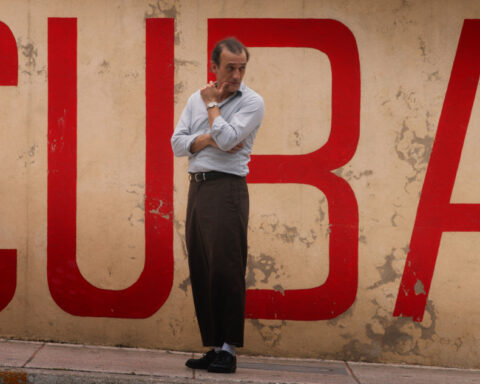The Great Wall
(Ireland, 72 min.)
Dir. Tadhg O’Sullivan
As political borders become increasingly fortified—both physically, as in the case of the border separating Europe and Africa, and symbolically (think of the power that the image of a fully fortified U.S.–Mexican border held for supporters of Trump during the recent presidential election)— the opposing forces of borders and migration (and their cousin, surveillance) continue to grow in prominence as themes in contemporary art. In RIDM’s festival line-up, which included at least a half dozen films dealing with the topic of Afro-European migration, and numerous others about crossings of different borders, Irish director Tadhg O’Sullivan’s The Great Wall provoked curiosity for its unique conception: a documentary film about the migrant crisis and the fortification European borders, based on a 1917 story by Franz Kafka (“The Building of the Great Wall of China”).
Despite the nearly 100 years lapse in time between its text (consisting entirely of excerpts from Kafka’s story) and visual component, the film sounds a deep resonance between the two, the more powerful for its historical reach. Moving between various locales on both sides of the border, the images alone disclose a reality that is by no means secret, but which is given a different kind of force and weight by not being explicated (“X number of African migrants attempt to cross over into Europe each day; X number survive,” etc.) or treated as a narrative in a typical documentary style. Instead, the superimposition of Kafka’s tale (which favours the descriptive rather than the story elements) invites encounters between the fictional and the real that momentarily lift the images out of their definite historical (i.e., documentary) space and into the conceptual space of Kafka’s fiction, while removing none of their impact as visual documents of an unsettling contemporary reality.
Despite being essentially an experimental feature, the film drew large audiences, though the reaction was difficult to gauge, and was certainly not unanimously positive. It’s slow-paced, and requires an open attentiveness to the space between text and image. But one need only be willing to give it that attention to recognize a work of both political relevance and aesthetic significance.











